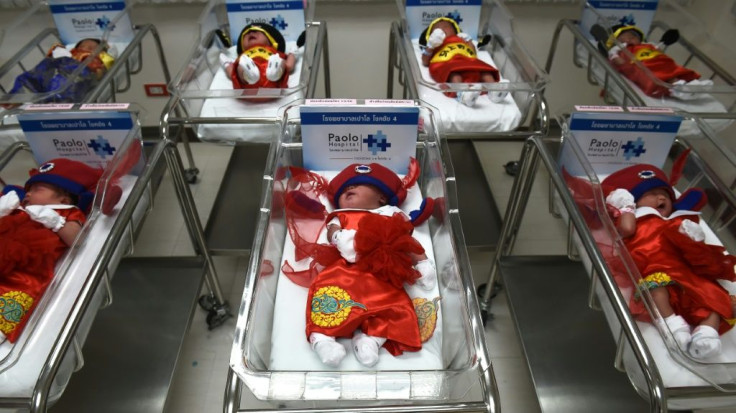Twins Peak: Double Births At 'All-time High' Globally
More twins -- one in every 42 children born -- are coming into the world than ever before, according to new research citing the rapid rise in medically assisted reproduction as a key factor.
Some 1.6 million twins are born each year, about a third more than four decades ago, according to a study Friday in Human Reproduction.
"The relative and absolute numbers of twins in the world are higher than they have ever been since the mid-twentieth century and this is likely to be an all-time high," said lead author Christiaan Monden, a professor at the University of Oxford.
The rise of assisted reproductive technology (ART) in developed countries since the 1970s, especially the United States and Europe, has contributed significantly to the rise in multiple births, the study found.
Mothers giving birth at an older age -- when twinning rates are higher -- is also a factor, as are increased use of contraception, women choosing to start families later in life and lower overall fertility.
Researchers gathered data from 165 countries from between 2010 and 2015, covering 99 percent of the global population.
For 112 of those nations twinning rates were also available for the period 1980 to 1985, making it possible to track changes over time.
In three quarters of the countries with data for both periods, twin births increased by at least 10 percent, the study found.
In Asia, the rate at which twins were born went up 32 percent, and in North America it jumped by 71 percent.
"In both periods, Africa had the highest twinning rates, and there was no significant increase over time," Monden said.
This was most likely due to genetic differences between African populations and other parts of the world, he speculated.

There was a decrease in the number of twin births in only seven nations.
The increased number of twins in poorer parts of the world raise concerns, the study cautioned.
"More attention needs to be paid to the fate of twins in low and middle income countries," said co-author Jeroen Smits, a professor at Radboud University in The Netherlands.
"In sub-Saharan Africa in particular, many twins will lose their co-twin in their first year of life, some two to three hundred thousand each year according to our earlier research."
Twin deliveries are associated with higher death rates among babies and children and more complications for mothers and children during pregnancy, and well as during and after delivery.
Researchers said the record number was solely driven by births of "fraternal twins", which derive from two separate fertilised eggs.
The number of identical twins -- known as monozygotes -- has remained stable worldwide at about four per 1,000 deliveries.
It is difficult to predict whether the rate of twin births will continue to increase, the researchers said.
"Most data suggest we are at a peak in high-income countries, especially Europe and North America," said Gilles Pison of the French Museum of Natural History, also a co-author.
"We might see a combination of lower overall fertility, older ages at birth and more medically assisted reproduction," he added. "The former would lead to lower twinning rates, the latter two to higher twinning rates."
Africa will be one of the main drivers in the coming decades, he said.
© Copyright AFP 2024. All rights reserved.





















